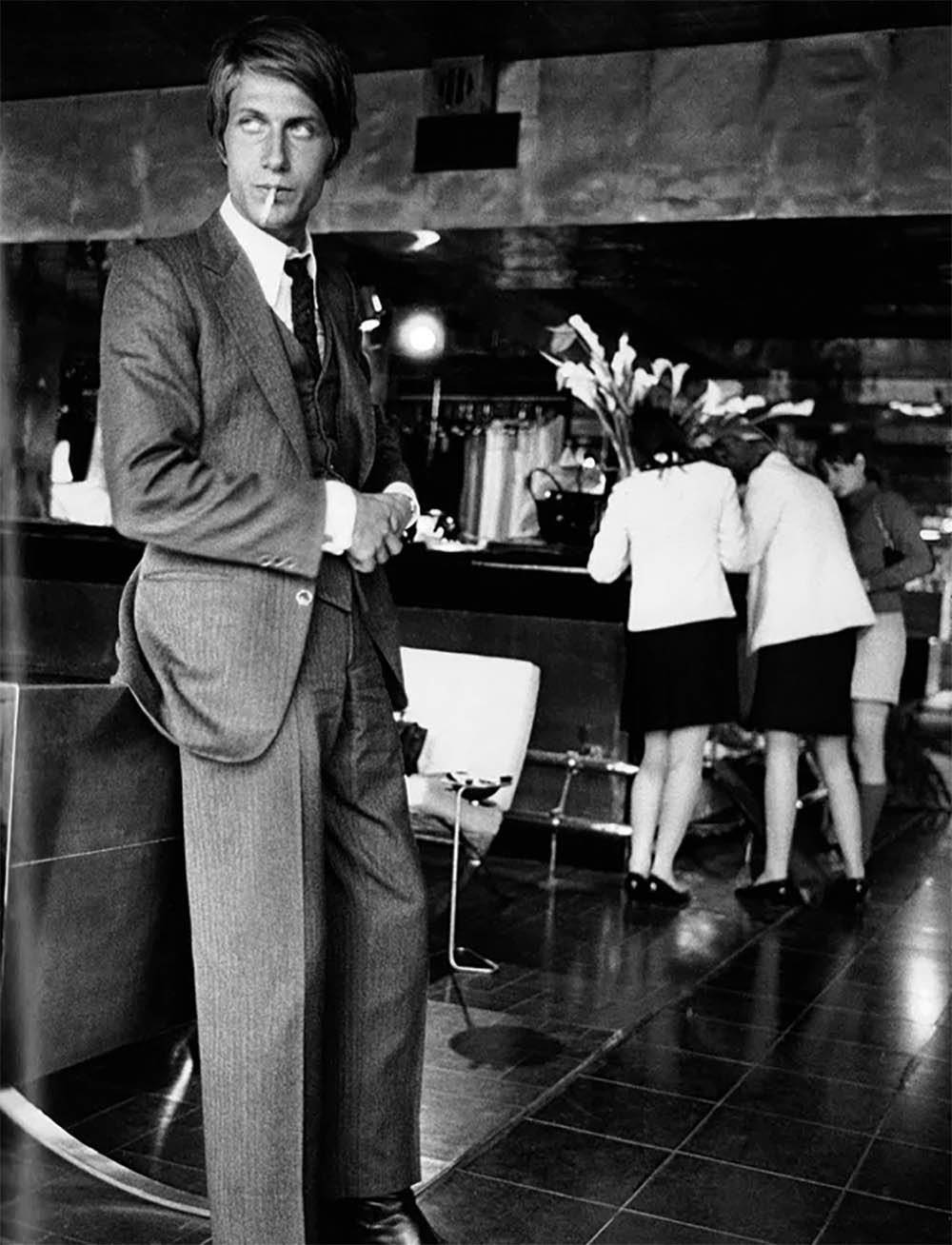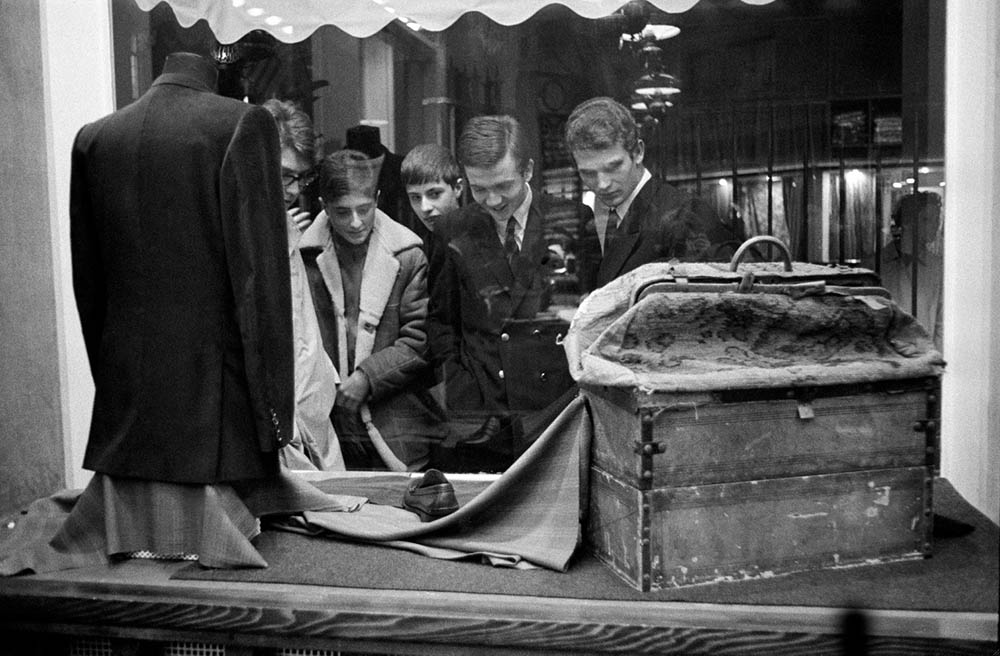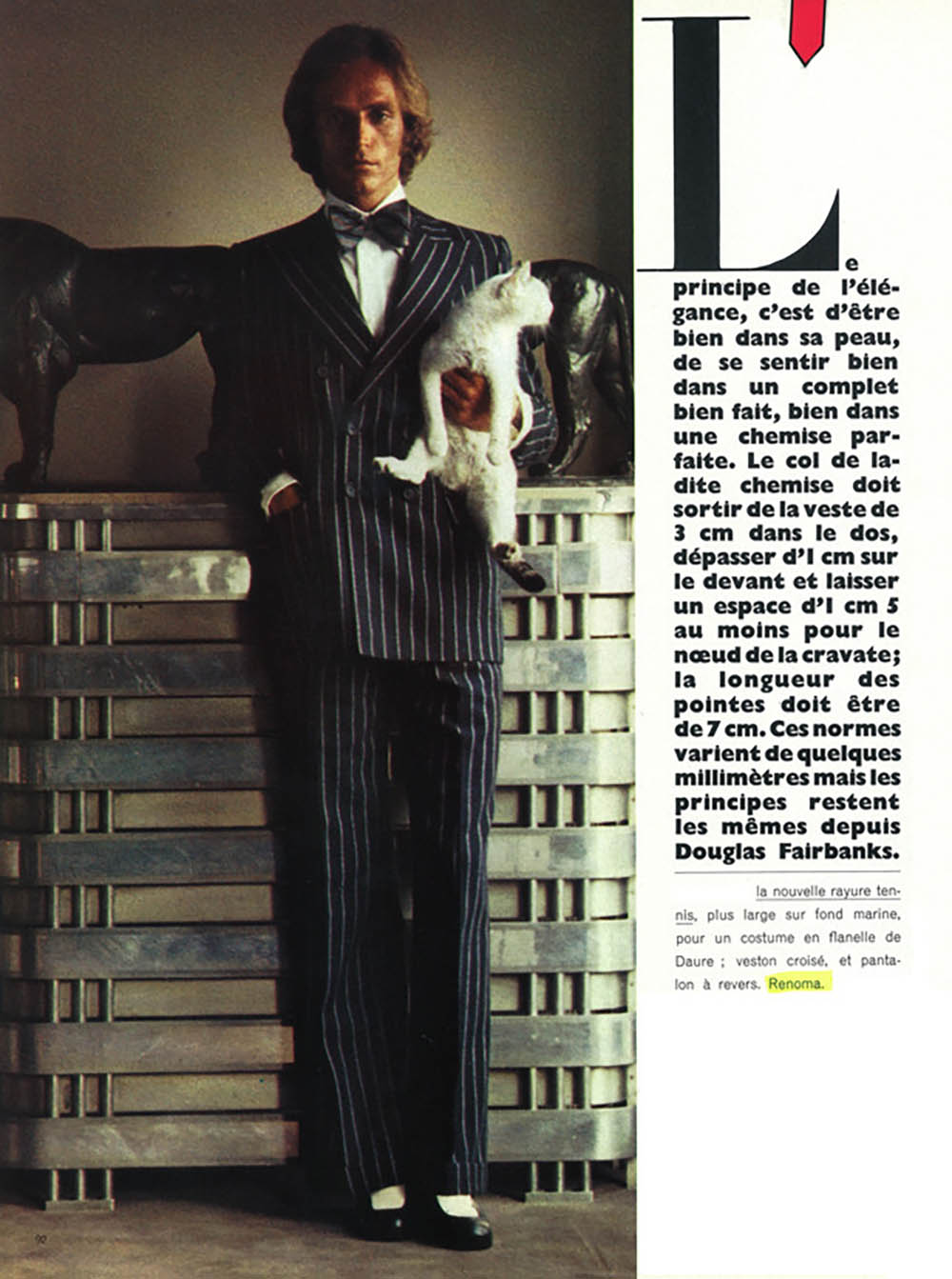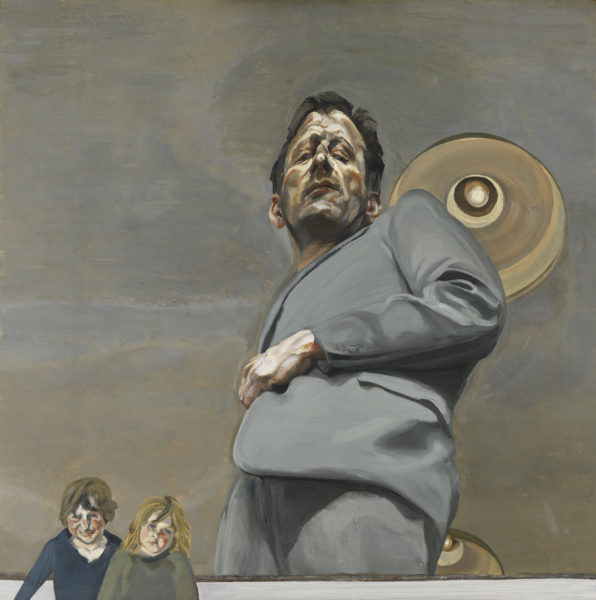At the beginning of The Glorious Thirties, the Baby Boomer generation is eager for consumption, and with regard to the Parisian golden youth, especially for clothes. However, by the end of the fifties, the supply for clothes destined for youth is nonexistent. Teenagers have no other choice but to dress in adults’ suits : grey, stiff garments, made by tailors who are more concerned about maintaining tradition than creating.
Maurice Renoma, son of a ready-to-wear manufacturer, opens a shop inside his father’s workshop in 1958. Probably because he has no technical training, Maurice allows himself the freedom to shape this new suit : he restructures it, raises the shoulders, changes the padding, lightens it, in doing so breaks its code and its taboo. He also plays with fabrics, recycles end-of-series garments, uses upholstery fabric, makes patchworks out of them.
His experiments lead to the « Renoma cut » : a slim fit, straight – almost « pagoda » shouldered jacket, with large lapels and deep vents ; worn on top of low-rise pants. A provoking cut. if Parisian « Minets » – especially the Drugstore bunch – are its first adopters, soon all of the fashion, music and cinema world in Paris is visiting the store at 129, rue de la Pompe !
This new style is meeting the youth demand and is carrying with it a means of expression, of rebellion, even. Maurice Renoma claims : « More than garments, we initiated a style. A lifestyle, way more than a dress code. A way to feel good in one’s clothes. There it is, the Renoma style. »

BARDOT, Brigitte. via Margutta, Rome, Italy. June 15th, 1967.

Anglais in mort de jalousie devant la coupe Renoma’. June 1969.

DUTRONC, Jacques. Paris, France. June 1967.

Unnamed. Minets in front of Renoma’s shop. 129 rue de la Pompe, Paris. undated.

Renoma advertising. Paris, France. VOGUE Hommes, 1973.
- COTTON« Soft, but with weight. Relaxed, but never shapeless. It carries memory in its creases. »
- LUCIAN FREUD« from borrowed suits to bespoke tailoring, Freud’s fashion choices evolved with his art »
- DAVID LYNCH« The oddest of Americans, the most American of oddballs, Lynch was a man with a uniform. »
- THE FLARED TROUSER



